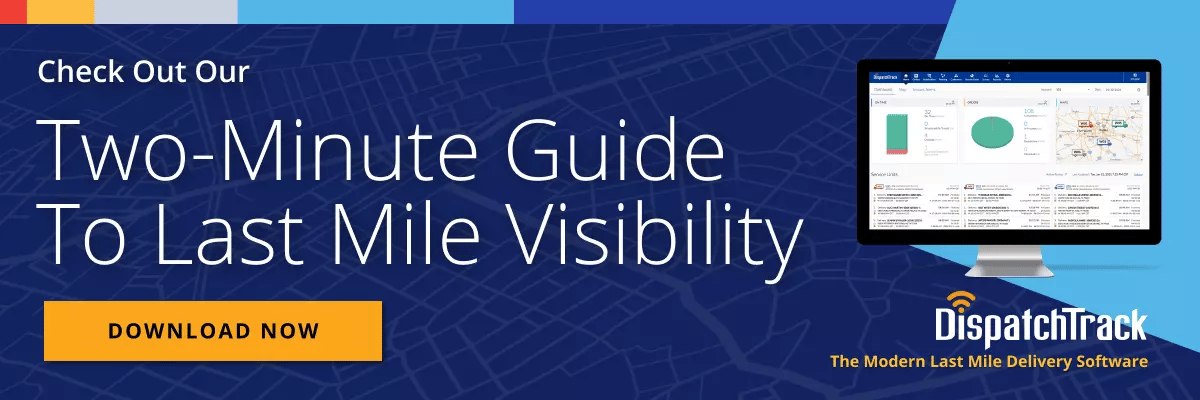Fleet management is highly complicated—especially when your business is still relying on manual ways of getting things done. Without the right tools, you can easily find yourself dealing with upset customers, high customer churn, damage to their brand, and high operating costs.

To achieve high customer satisfaction, gain repeat customers, and ensure low operating costs, you need to invest in a fleet management program that can address the various challenges that come with modern delivery management.
Here's a closer look at the different challenges your fleet management solution should address.
Top Challenges for Your Fleet Management Program
Lack of visibility on drivers
Drivers play a crucial role in ensuring timely deliveries and lowering operating costs. Thus, fleet managers must supervise their drivers thoroughly to ensure that they meet expected delivery windows and to keep costs at manageable levels.
It can be quite challenging to keep tabs on drivers out in the field. But with a fleet management solution, fleet managers and dispatchers can monitor their drivers in real-time via live, automated status updates and GPS tracking. This enables you to spot potential issues and disruptions far enough in advance to actually do something about them.

High fuel consumption
Without the best fleet management software, fleet managers won't know which drivers are speeding or idling unnecessarily. Identifying drivers who go beyond the allowed speed and idle too much help in lowering gas mileage. To wit, a study by the United States Department of Energy revealed that addressing speeding can cut down fuel consumption by one third.
Driver safety
Ensuring drivers' safety is of great importance to fleet managers—which is why correcting driver behavior and performance should be one of the core functions of modern fleet software systems. If you can gain real-time info into driver behaviors and activities, you can more easily track, address, and cut down on dangerous driving.
In this way, your fleet management system can also help cut down on insurance costs by allowing you to put in place more security measures to ensure drivers' safety and ultimately reduce the number of incidents that occur on the road.
Poor route planning
Poor route planning is a major cause of operational inefficiencies. Manually plotting routes using maps and sheets is not only time-consuming but very costly. Businesses relying on conventional planning are spending a lot on fuel bills, labor hours, and missed deliveries.
And it’s not just manual planning that’s the problem—there are plenty of route planning tools out there that can’t account for all the parameters that impact delivery performance, to say nothing of tools that can’t scale or can’t accurately estimate ETAs based on historical route data.
Your fleet management solution addresses poor routing problems by automating the process as much as possible. Robust route optimization features can help you easily find the most cost-effective and efficient routes, taking into consideration different variables affecting delivery times. These include real-time traffic conditions, driver speed and skill, customer time window requests, and so on. In an ideal world, fleet managers can also make last-minute adjustments to routes without causing havoc on the entire fleet's schedule for the day.
Cargo and asset theft
Data from the FBI shows that US businesses lose roughly $30 billion to cargo theft annually. Fleets handling expensive cargo can be primary targets for thieves. Since drivers can’t remain in their vehicles round-the-clock, there's always a risk that someone could succeed in taking some if not all of the cargo. A fleet management program offering real-time visibility will help businesses track any stolen equipment, assets, or cargo and recover them as quickly as possible.
Poor compliance
Many businesses are having a hard time complying with local and national rules and regulations around fuel taxes and driver hours—and managing these things by hand doesn’t make life any easier. Paper inspection sheets, vehicle inspection reports, driver logs, and fuel tax tracking are all fundamentally inefficient, and they can add huge back-office headaches. Effective fleet management requires complete compliance and organized record-keeping so that a full trail of data is ready for each vehicle—all of which is much easier when automated!
That’s why your fleet monitoring and management solution should help in ensuring full compliance with these regulations. For example, businesses can comply easily with the Hours of Service mandate when they have a solution in place allowing drivers to log their driving hours automatically and electronically. The information gathered by the vehicle's electronic logging device (ELDs) is then stored in the fleet management system. A similar process can also be a big help in automating fuel tax reporting and compliance.
Information overload
Fleet managers often deal with large caches of data—caches that may be so large that no human could make use of them effectively. Going through massive amounts of information consumes many hours and fleet managers may still miss out on important information. The right fleet management program comes with data intelligence tools that can present multiple data sets in easy formats like charts and customizable reports, to enable fleet managers to track fleet performance thoroughly using the right metrics and KPIs.
Poor customer service
Historically, most delivery organizations have had major difficulties in providing customers with an accurate estimated time of arrivals (ETAs). This is only exacerbated by the fact that drivers are often not given the optimal routes for meeting ETAs and maximizing capacity.
Unfortunately, businesses that provide poor delivery services will ultimately suffer from high customer churn. But fleet software can help businesses improve their delivery services, and by extension their customer experience. With route optimization features that ensure that drivers take the quickest routes—plus real-time visibility allowing dispatchers and managers to make quick changes to ensure that packages are delivered on time—you can actually keep the promises you make to your customers.
At the end of the day, businesses who run commercial fleets can overcome challenges with the right tools. Your fleet management program should enable your business to address the many operational inefficiencies and complexities that tend to plague fleet management—empowering you to provide great delivery services at lower operating costs. Ultimately, this is what companies need to thrive and gain more advantage over their competitors.
